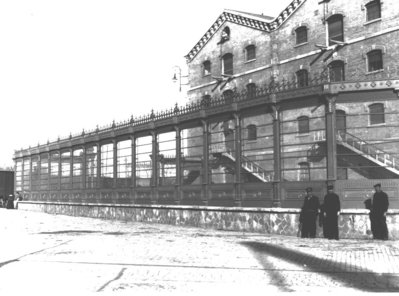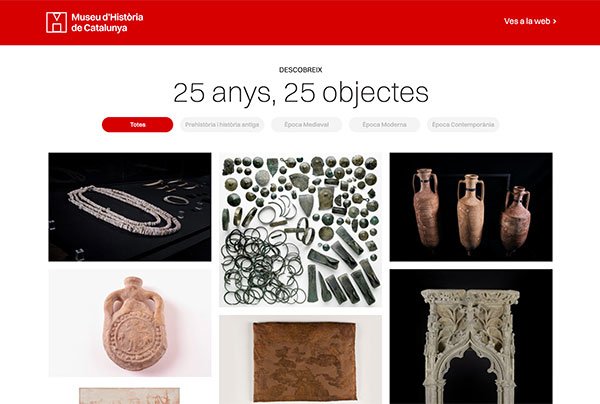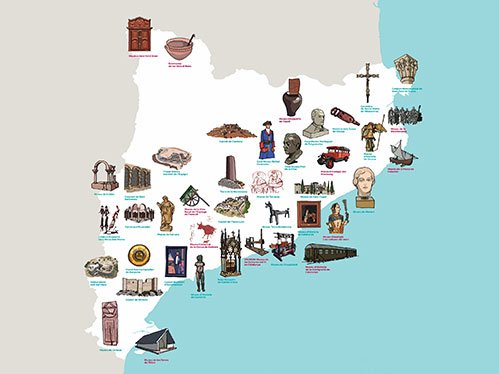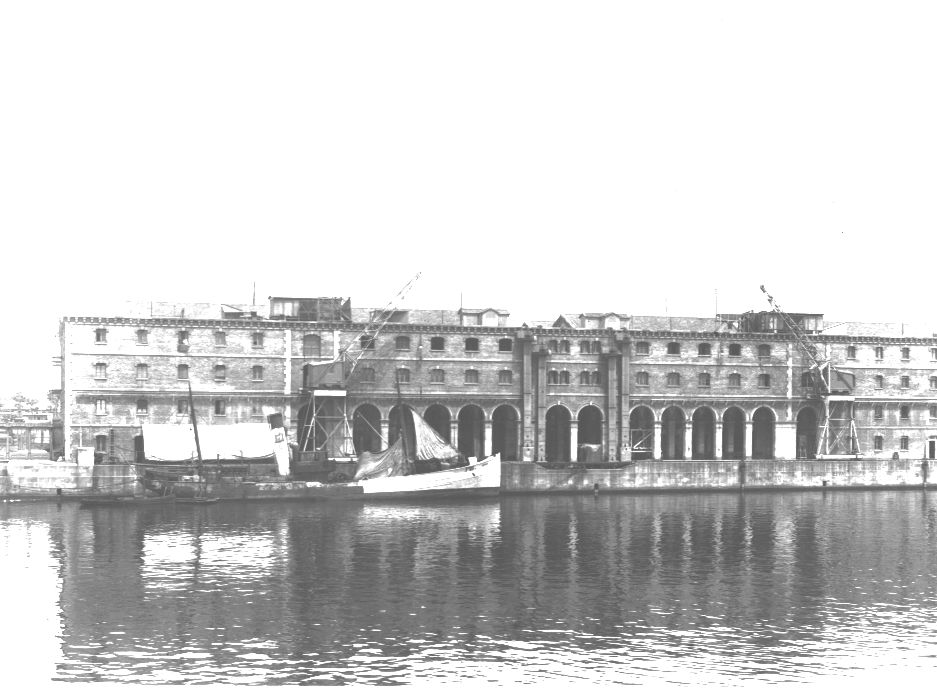The History Museum of Catalonia occupies a section of the former General Trade Warehouses. Although the building is known by the name Palau de Mar, it is in fact the only surviving construction from the old industrial port of Barcelona. The warehouses were designed in 1881 by the engineer Maurici Garrán, who was inspired by English port buildings of the period. Even today, anyone familiar with the docks in London or Liverpool will recognise the appearance of the Palau de Mar in Barcelona.
Building work began in 1885 on what had been the Fishermen’s Beach, and was completed on 1 July 1902. The Press of the time applauded the modern facilities, which incorporated lifts and conveyor belts among other novelties. Rail tracks were built around the building to make it easier to move goods arriving at the port.
During the first decade of the existence of the warehouses, the Port Board managed them directly, but in 1910 control was awarded to a private company, the Sociedad de Crédito y Docks de Barcelona. After the Civil War, the warehouses declined and had various uses, even becoming a barracks for the Corps of Riflemen.
In 1991, as part of the urban improvement actions in Barcelona for the Olympic Games, the Port Board commissioned the restoration of the outside of the building prior to full renovation. Finally, in December 1994, the design for remodelling and adapting the building intended to house the History Museum of Catalonia was awarded to the architects Josep Benedito i Rovira and Agustí Mateos i Duch.
The current building combines the port tradition with the dynamism of contemporary architecture. Visitors can appreciate this dialogue between old and new and, when they go up to the terrace on the top floor, they can enjoy excellent views of the port and the city of Barcelona.
-

Autoritat Portuària de Barcelona. Autoria desconeguda. Fons Carlos Angulo.
-

Autoritat Portuària de Barcelona. Autoria desconeguda. Fons Carlos Angulo.
-

Autoritat Portuària de Barcelona. Autoria desconeguda. Fons Carlos Angulo.
-

Autoritat Portuària de Barcelona. Autoria desconeguda. Fons Carlos Angulo.
-

Autoritat Portuària de Barcelona. Autoria desconeguda. Fons Carlos Angulo.
-

Autoritat Portuària de Barcelona. Autoria desconeguda. Fons Carlos Angulo.
-

Autoritat Portuària de Barcelona. Autoria desconeguda. Fons Carlos Angulo.
-

Autoritat Portuària de Barcelona. Autoria desconeguda. Fons Carlos Angulo.
-

Autoritat Portuària de Barcelona. Autoria desconeguda. Fons Carlos Angulo.
-

Autoritat Portuària de Barcelona. Autoria desconeguda. Fons Carlos Angulo.
-

Autoritat Portuària de Barcelona. Autoria desconeguda. Fons Carlos Angulo.
 Opening times
Opening times
 Location
Location
 Tickets
Tickets
 Admissions
Admissions




 Twitter
Twitter Facebook
Facebook










